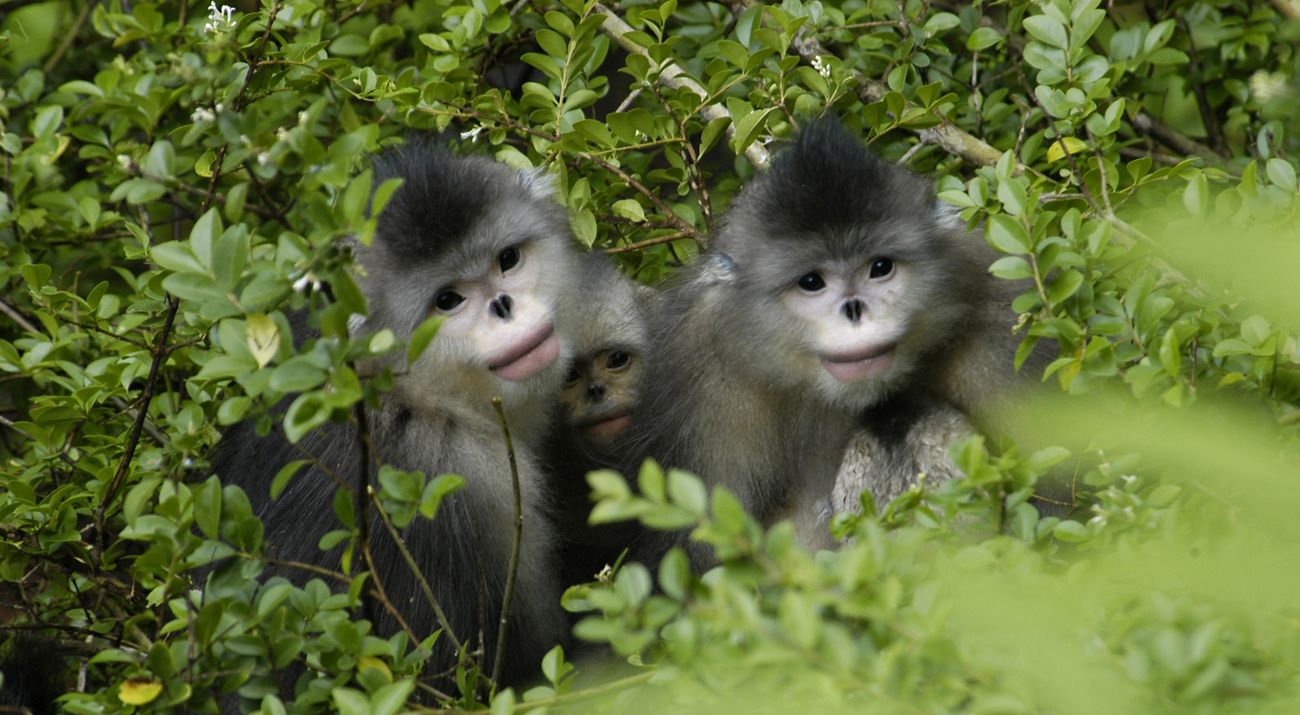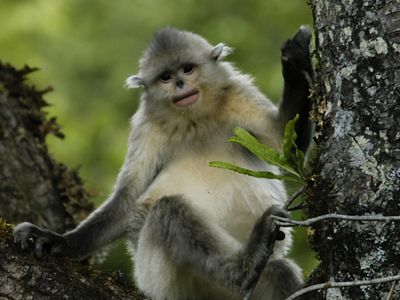
In the Yun Ling Mountains of southwestern China, Yunnan golden monkeys roam the rugged landscape in search of lichens, their favorite meal. The endangered primates band together in groups of several hundred individuals. But the impressive size of these super troupes can be deceiving. Fewer than 3,000 golden monkeys remain, the victims of habitat loss and poaching.
Now, their fortunes may be shifting. A dozen government agencies and independent organizations, including The Nature Conservancy, recently established the Yunnan Golden Monkey Protection Network, which aims to protect the species across its entire craggy range. “Nearly 7,000 square kilometers of forest are protected under the new network, and most of them are primitive forest,” says Haohong Liao, a conservation specialist for TNC based in Yunnan province.
To imagine the primates’ home, picture steep mountain slopes blanketed with deciduous and coniferous forests and carpeted in places with thick tangles of bamboo undergrowth. High in the mountains, the air is thin. In summer, the forests are wet and thick with fog, says Cyril Grueter, a biological anthropologist at the University of Western Australia who has traversed the challenging terrain to study the social structure of the Yunnan monkey. During long, dry, dusty winters, the monkeys find little besides lichens to fill their bellies, he says.
These pug-nosed primates roam far and wide across their forested landscape, with home ranges encompassing more than 11 square miles. But agriculture, logging and development have carved up their habitat, making food harder to find. Some populations of snub-nosed monkeys are marooned on forest fragments surrounded by farms and pastures, Grueter says. Others are separated from other monkey groups by highways.

What’s in a Name?
The Yunnan golden monkey goes by several names including its most descriptive moniker, the black-and-white snub-nosed monkey. The name refers to its missing nasal bones—an evolutionary curiosity. The pug-nosed primate is also notable for its bright red lips, which act as a status symbol for high-ranking males.
Those threats aren’t new. The monkey has been on the endangered list since 2008, and TNC has supported snub-nosed monkey conservation projects for nearly two decades. But the new protection network turns those efforts up a notch, Laio says.
The project brings together government protection management agencies, conservation groups, social welfare organizations and scientific research institutions. Together, they’ll monitor monkey populations and habitat health, establish a patrol system to prevent poaching and illegal logging, and restore and reconnect the increasingly patchy landscape. The partners will also educate local communities about conservation and lead community development efforts to establish livelihood opportunities to take the place of poaching and logging.
It’s a big effort, but the payoff, too, stands to be sizeable: The Yun Ling mountain forest is a biodiversity hotspot and lies at the heart of the Three Parallel Rivers of Yunnan Protected Area, a UNESCO World Heritage site. “We are not only saving one precious endangered species endemic to China,” Liao says. “Protecting the golden monkey will benefit many other plants and animals across the entire ecosystem.”
Get the Magazine
Sign up to become a member of The Nature Conservancy and you'll receive the quarterly print edition of the magazine as part of your membership.